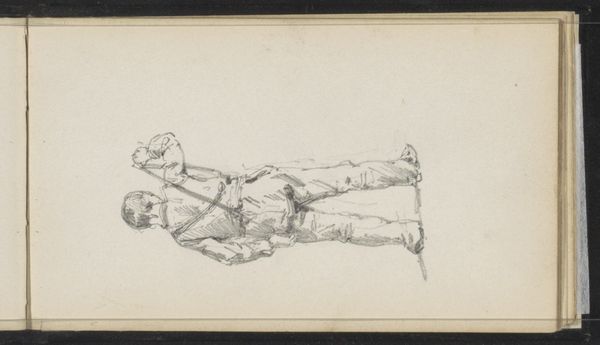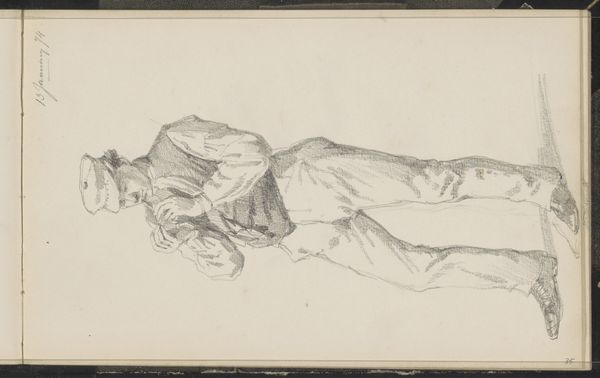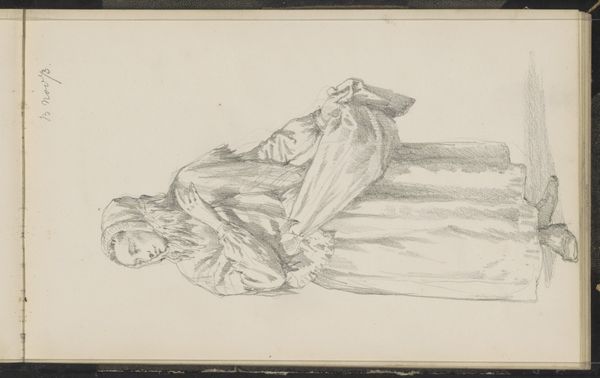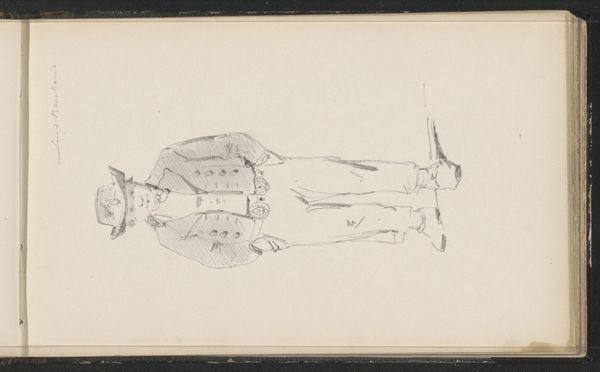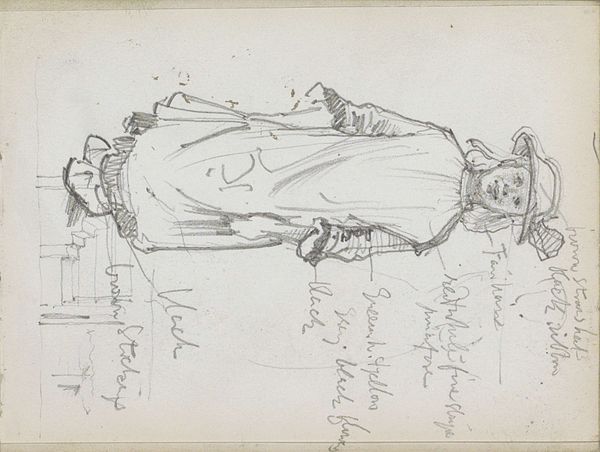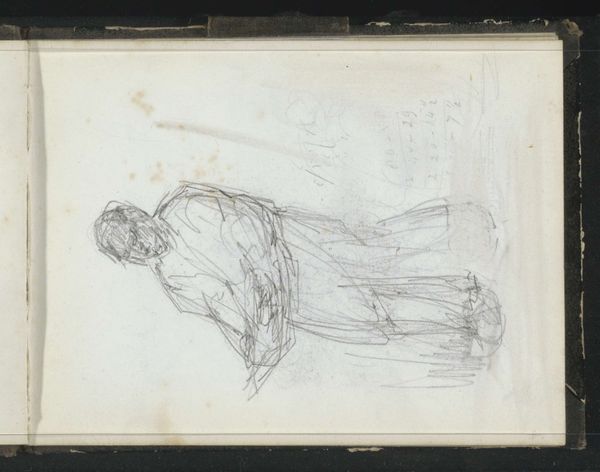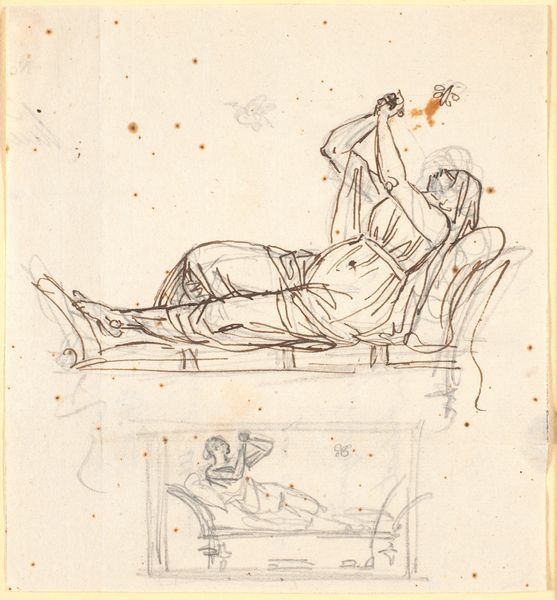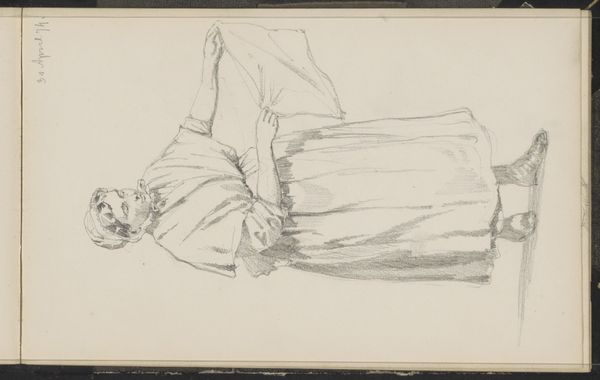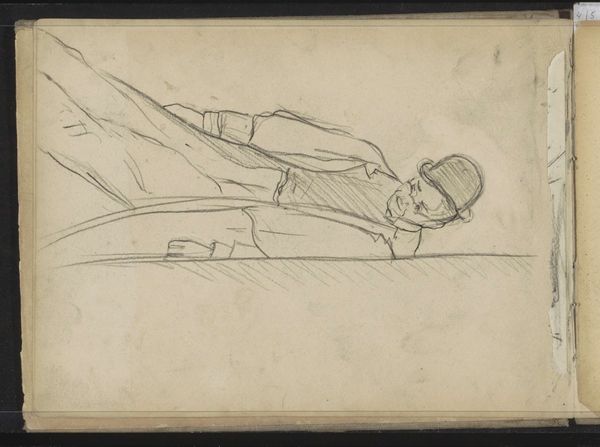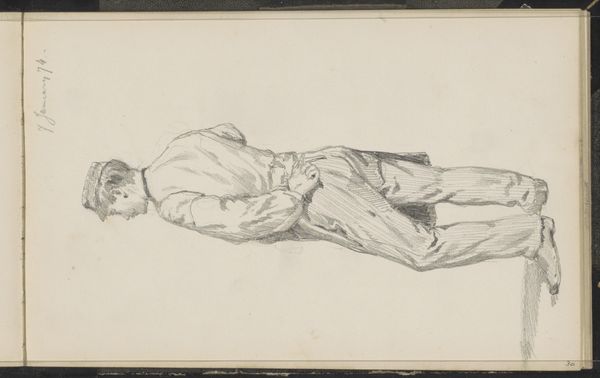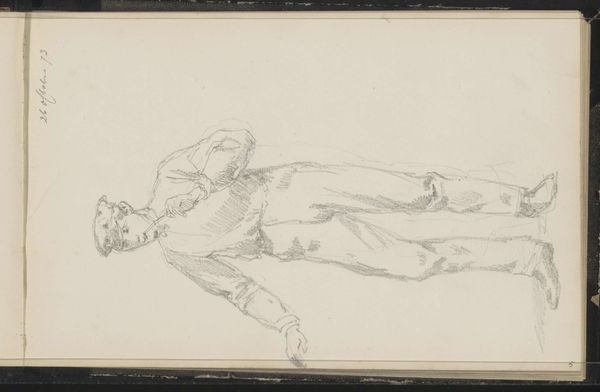
Copyright: Rijks Museum: Open Domain
Editor: This sketch, “Man holding a bowler hat”, created sometime between 1890 and 1922, is a drawing made with pencil on paper. The style is impressionistic and you can see it's part of a sketchbook, but I’m also seeing something incomplete, sketchy even… What is your interpretation of the social commentary going on here? Curator: This appears to be a sketch, part of a broader social practice in the late 19th and early 20th centuries, wherein artists used sketchbooks to document their immediate surroundings and observations of everyday life. Note the hurried strokes. How does this rapid capture reflect the changing social and urban landscapes of the time? Editor: It definitely speaks to speed… but I think this is capturing something beyond physical locations... There's this man holding his bowler hat almost like… an offering? A subtle rebellion? Curator: Yes, the bowler hat! It was a common symbol of the bourgeoisie. Considering that context, could the man holding the hat signify a moment of reflection on social roles? Or even a critique? Editor: That's really fascinating; it shifts my initial impression. I hadn't thought of it as a subtle commentary. It appeared just as a fragment. Curator: The public accessibility of such sketches is intriguing. They provided a glimpse into personal observations that engaged with political undertones. The act of viewing itself becomes democratized. Do you think the accessibility enhances or diminishes its message today? Editor: I believe that, as part of a sketchbook, it allows modern viewers to connect with how ordinary people lived. Curator: Exactly, it brings the viewers of the 21st century face-to-face with images that may have informed a painter’s more public ambitions.
Comments
No comments
Be the first to comment and join the conversation on the ultimate creative platform.
